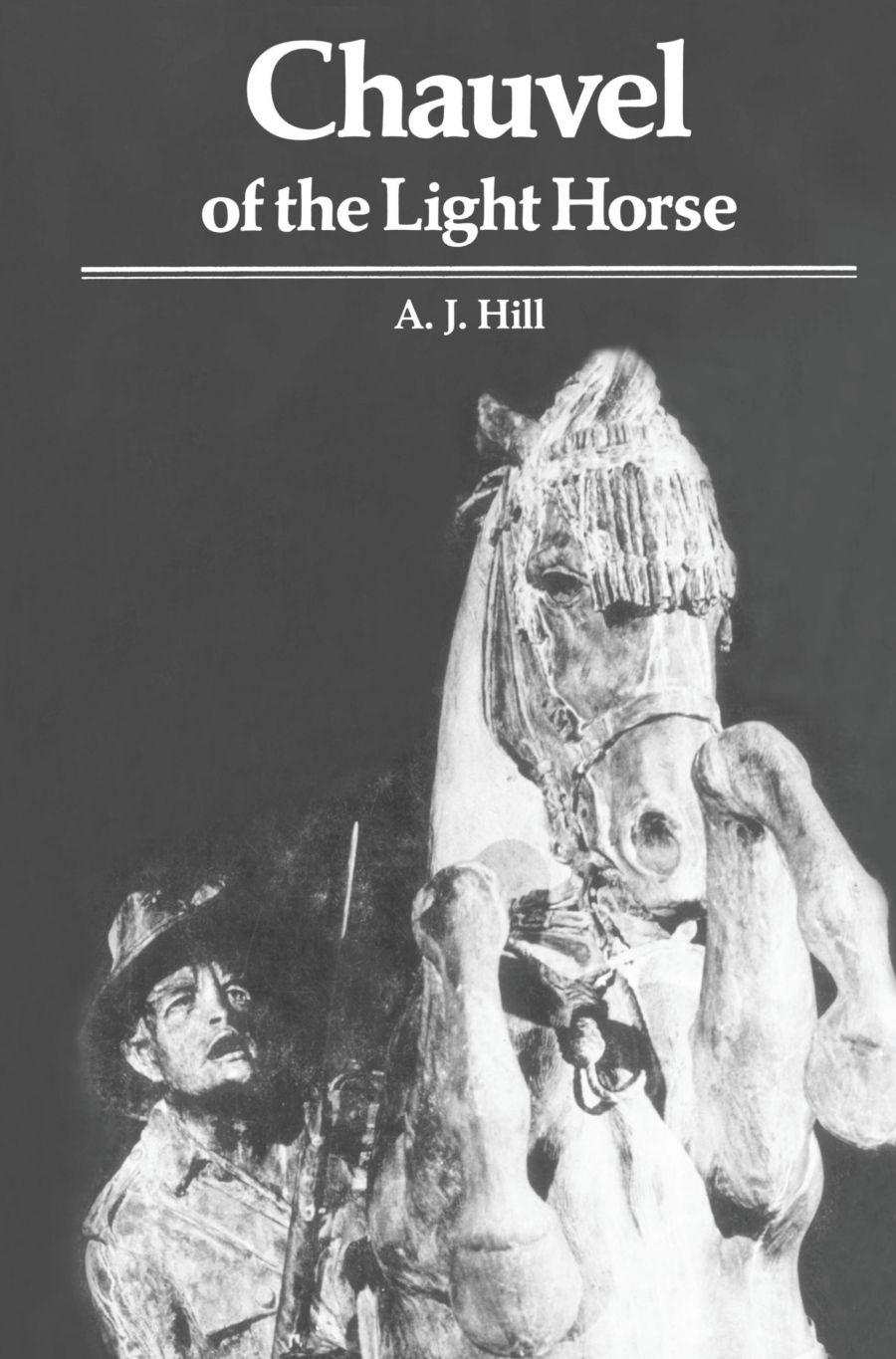
- Free Article: No
- Contents Category: Biography
- Review Article: Yes
- Article Title: Chauvel of the Light Horse
- Online Only: No
- Custom Highlight Text:
Sir Harry Chauvel, one of the founding fathers of the Australian Armed Forces, died in 1945. His involvement in the military and political history of Australia stretches back to the Boer War, through Gallipoli and Beersheba to the Volunteer Defence Corps of World War II. A.J. Hill’s affectionate and painstaking biography of Chauvel also implies concern for the present and future defence of the nation. At a time in popular repute when military sympathies of any kind are regarded as sabre-rattling, Hill’s book is welcome in both tone and content
- Book 1 Title: Chauvel of the Light Horse
- Book 1 Subtitle: A biography of General Sir Harry Chauvel, G.C.M.G, K.C.B.
- Book 1 Biblio: Melbourne University Press, 1978 xx, 265pp illus., $25.00pb
Chauvel’s career nearly came to an end soon after it began. Horsemen from Australian states were among the first offerings from the Empire to fight for Britain in South Africa. Chauvel’s Queensland Mounted Infantry, resplendent in their felt hats with tucked emu feathers, regularly borrowed native horses. Chauvel was once sent back to deliver a battle report. ‘The Canadians moving up in support saw a slouch-hatted figure on a Boer pony approaching over a ridge and immediately opened fire. Chauvel took cover, tied his handkerchief to the muzzle of his carbine and for the only time in his life, advanced under the white flag. Chauvel does not appear to have recorded the Canadians’ comments.’ In such incidents Hill admirably captures the motivating spirit of the colonial volunteers. The perspective is valuable for those of us whose view of South African history is coloured [sic] by names like by Churchill, Verwoerd and Breaker Morant.
Australian troops fought well in the Boer War, as they have in other wars, but with the same indiscipline and indifference to recognised procedure that caused men to be killed by Royal Navy gunfire at Tobruk. Hill comments several times on this phenomenon with which Chauvel regularly struggled:
Another fault is slowness and want of punctuality … [The Australian horseman] is naturally slow except when he gets mounted and he’s apt to be a bit too quick for the good of his horse. You would hardly believe it, but I have seen English Mounted infantry who have only had their horses a few weeks, be ready to move off before Australians who have been used to saddling up their whole lives. This can only be cured by training.
Sordid examples of indiscipline occurred at the ‘Battle of the Wozzer’ amidst Cairo’s brothels in 1915, and the murder of some thirty Arabs at Surafend in 1918 in retaliation for the shooting of a New Zealand Horseman by an Arab thief. This aspect of jolly sozzled yeomanry was despised by Chauvel. Hill’s introduction concludes: ‘[after Federation] … having made Australia, they had yet to make Australians.’
Chauvel worked hard to make proud Australians of the men under his command. At Gallipoli they withdrew as efficiently as they had fought. In the desert war which followed, Chauvel with Hutton, Brudenell, White and Birdwood strove constantly for integrity in Australian units, with discrete administration and command.
Two examples upon which Hill comments in detail:
One of Hutton’s most far-reaching decisions had been the organisation of all the Australian mounted regiments not as cavalry but as light horse, arming them with rifle and bayonet instead of the sword and training them for the role they were so triumphantly to fulfill in Sinai and Palestine under Chauvel.
(In passing, one then wonders whether the campaign for Beersheba was ‘the last great cavalry operation’.)
Secondly, Chauvel determined to change an inscription at Dog River. Royal Engineers The Engineers mounted a plate which read: ‘The British Desert Mounted Corps aided by The Arab forces of King Hussein captured Damascus, Homs and Aleppo, October 1918.’ There is a fine photograph which also shows the revised version:
The Desert Mounted Corps composed of British, Australian, New Zealand and Indian cavalry with a French regiment of Spahis and Chasseurs d’Afrique and the Arab forces of King Hussein captured Damascus, Homs and Aleppo, October 1918.
Photographs in the book are either excellent, like the plaque picture, and some fine action shots, or they are quite worthless. The maps are simply dull, and some of them, (viz, ‘pursuit to the Nahr el Auja’, p135) are obscure because they are inadequately keyed.
It is possible that Hill’s book will eventually be measured as a major contribution to the correction and understanding of Lawrence’s Seven Pillars of Wisdom, which is, of course, as much art and autobiography as it is history. Another famous confusion which comes to mind is 40,000 Horsemen, the definitive film about the Light Horse made by Chauvel’s nephew, Charles. Hill proves in his book that neither Mr Ross nor the sandhills of Cronulla did sufficient credit to Sir Harry or his polyglot Brigades, which included at various times the troops listed on the Dog River plaque, plus ‘South African artillery, Rarotongan boatmen, Egyptian camel drivers, and Italian, West Indian and Jewish infantry.’ What bizarre national groupings will be necessary to resist the next assault by tyranny? And will we again be able to produce leaders as decent and honest and ruthless as Harry Chauvel? Hill’s book manifestly makes the point that such men are rare and invaluable.


Comments powered by CComment